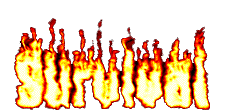|
Things to do at Tahoe: Lake Tahoe Recreation
National Association for Search and Rescue |


What better time for a fire than when it's dreary and raining?
June 19, 2000
Despite what you may think, building a heart-warming, leave-no-trace fire in the rain is not impossible. Here's frequent Backpacker contributor Paul Cleveland's secret, perfected in the soggy Pacific Northwest. Step 1: Look for dry wood beneath tree canopies, logs, and rock overhangs. Without dry tinder, you're sunk, so collect it as you hike, then store it in a zipper-lock bag inside your parka. Save used tissues and paper wrappers. In camp, look for dry wood from matchstick to wrist-thick size. Step 2: Cover the wood with a tarp, tent rainfly, or pack cover while you search for a suitable fire location. Use an existing fire ring or a fire pan. If neither is available, find a location free of vegetation with sandy or rocky soil. Or build a base for a mound fire using 2 inches of sandy soil. Step 3: Construct a tall, slender tepee of matchstick-size wood over a small pile of paper. Light the paper and tinder inside the tepee. If the tinder is damp and won't catch, try placing the nub of a candle inside and lighting it. You can also buy firestarters at outdoors stores or make your own. Step 4: When the twigs catch, feed the fire with more matchstick-thick tinder. Gently blow or fan the fire until you see the glow of embers. If the wind is whipping or rain is pouring, shield the fire with your open jacket or ask a companion to act as a windbreak. Step 5: Gradually increase the size of the wood you add, taking care not to overfeed the fire. Once you get several wrist-thick pieces going, you're getting warm. Never leave a fire unattended, and disperse ashes and dirt once they're doused and cold to the touch. Don't forget to replace the dirt used for the mound.

